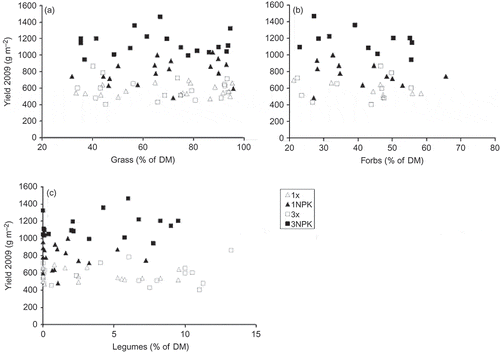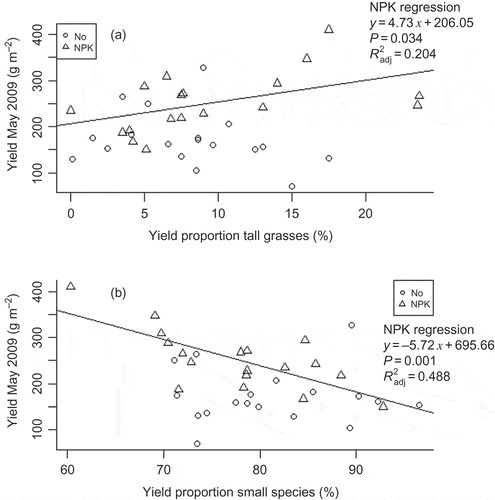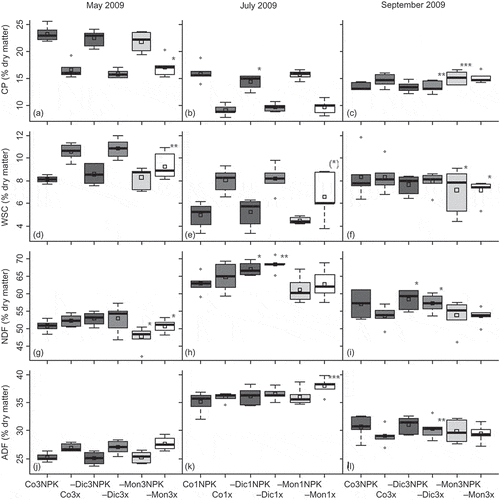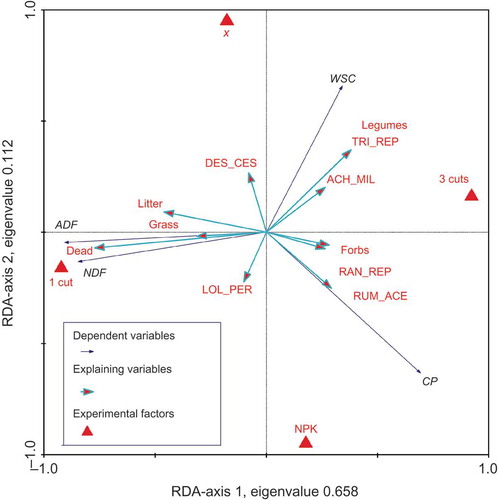Figures & data
Table 1. Experimental factors and treatment levels of the GrassMan experiment
Table 2. Relative change of degree of presence of the 20 most frequent species in 9 m2 before (June 2008) and after (May, August 2009) the herbicide application within the three sward types
Table 3. Importance of the experimental factors in explaining the differences in annual yield 2009
Table 4. Proportion of variation in single and total yields 2008–2009 explained by the experimental factors (%)
Figure 1. Relationships between total yield 2009 and proportions of grasses (a), forbs (b) and legumes (c) under the four management regimes (legend: middle right). None of the correlations between yield and independent variable within one management category were significant. For abbreviations of experimental treatments please refer to Table 1.

Figure 2. Yield May 2009 dependent on proportion of tall grasses (a) and proportion of small species (b) grouped by fertilization level (with regression lines). The corresponding linear model includes a significant interaction between nutrients and tall grasses (P = 0.032) and nutrients and small species (P = 0.017), response variable untransformed.

Figure 3. Box and whisker plots showing the four quartiles, the median (calculation of outliers by the default method in R) and the means, denoted by small squares, of selected forage quality characteristics in the six different sward type × fertilization level combinations at each of the three harvests. Second cut (July) of the three cut regime not presented. Asterisks denote significant differences from the control sward of the same fertilization level (***P < 0.001, **P < 0.01, *P < 0.05, (*)P = 0.0506). Linear contrasts in linear models; either models with different variances per fertilization level (graphs (c), (k)) or sward type (graph (f)) or response variable either square root (graph (h)) or not transformed (all others). For abbreviations of experimental treatments please refer to Table 1.

Figure 4. Ordination diagram of a redundancy analysis (RDA) with forage quality characteristics (contents of CP, WSC, ADF, NDF in 2009, untransformed) as dependent variables and the experimental factors utilization and fertilization (cf. ) and vegetation characteristics (instead of sward types) as explaining variables. Quality characteristics of the three-cut variant are averaged across harvest dates. Explaining variables with a correlation coefficient with the first and second ordination axis <–0.2 and >0.2 are included.
